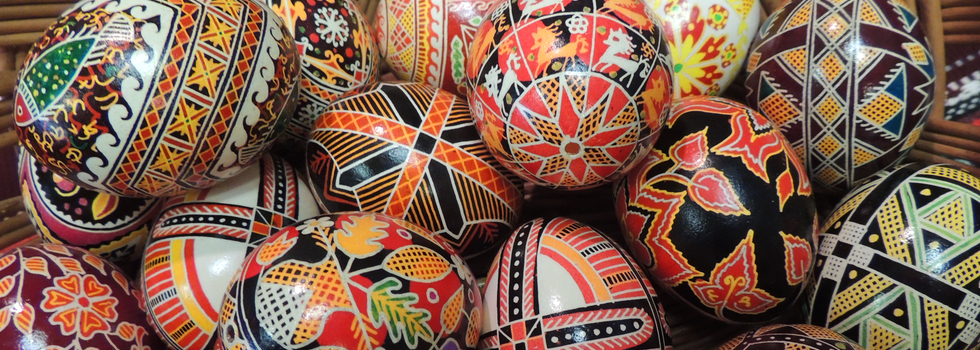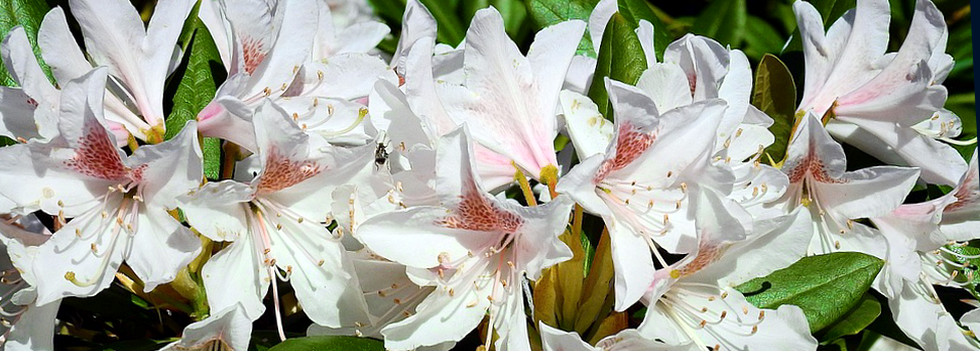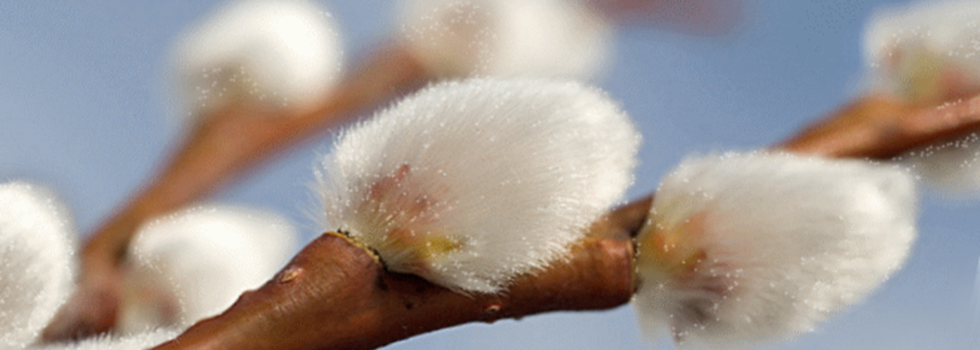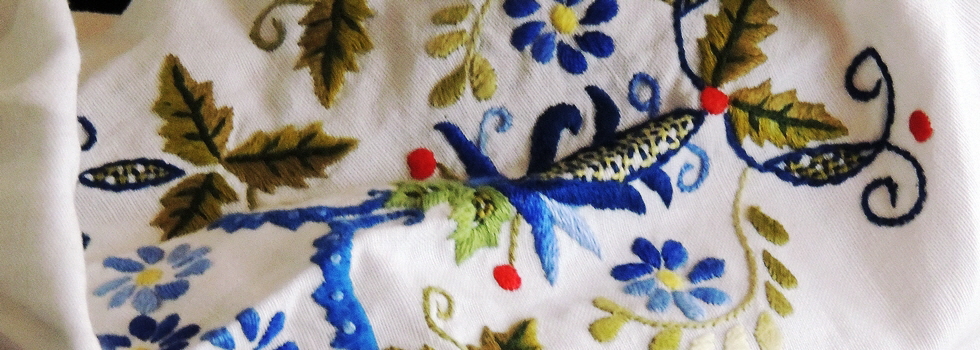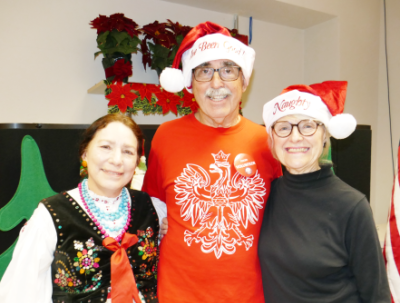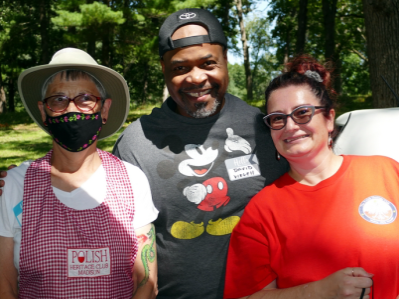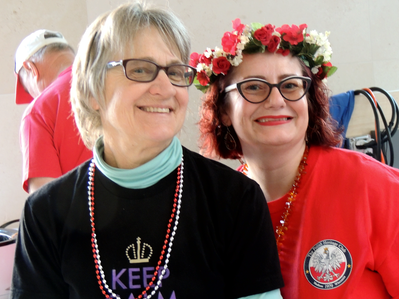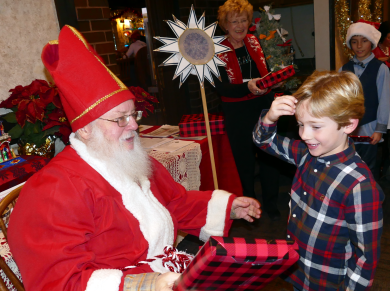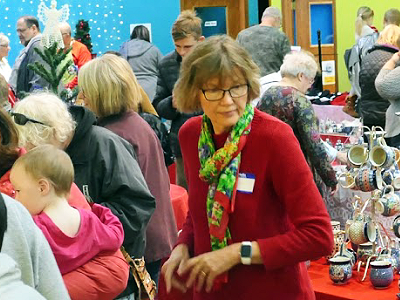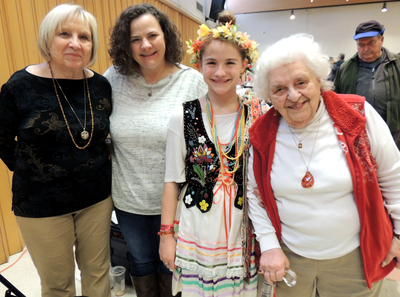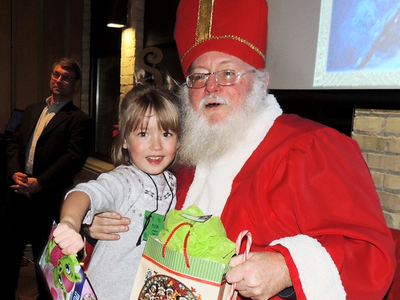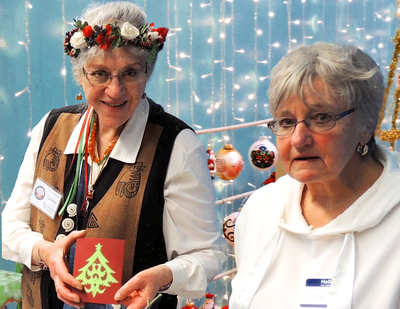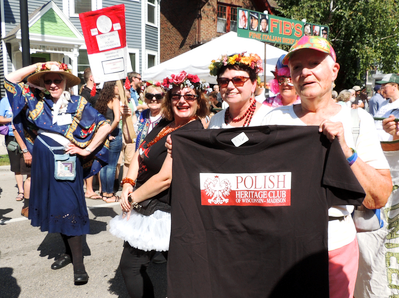


In Polish, the word szopka (plural szopki) refers to the nativity scenes (szopki bożonarodzeniowe) adorning Polish churches at Christmas time. Called also mangers, cribs or crèches, they became popular after St. Francis of Assisi created the first manger in Greccio, Italy (1223) and Franciscans brought the idea to Poland just a few years later. The Krakovian szopka emerged from this tradition in the early XIX century due to winter shortages of jobs for stone masons, brick-layers, tilers and carpenters.
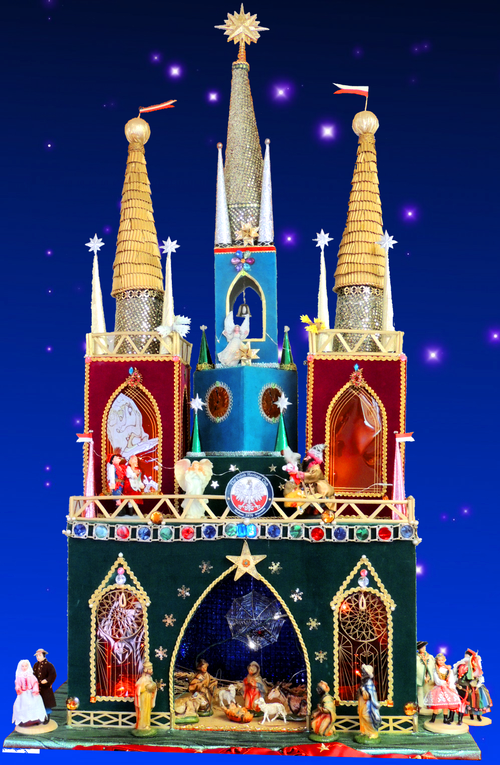
Szopka krakowska belonging to the Madison's Polish Heritage Club. Constructed first in early 1980s, it was recently renovated by Gloria Welniak in consultation with several PHC members.
The resurrected szopka was first showcased at the 2018 Christmas Bazaar and PHC Wigilia. Its story is featured in the November 2018 issue of the PHC newsletter. (photo: Irena Frączek)
To make money during seasonal slowdowns, the industrious construction workers turned to building the miniature copies of church mangers and using them as portable backdrops for kolędowanie (a custom involving groups of door-to-door carolers in ritual costumes collecting donations for their singing) or staging the nativity plays (called jasełka in Polish) performed on the streets or in the houses of wealthier folks. These spectacles starred amateur actors and/or puppets, both gradually replaced with the doll-like figurines in the crèches. That’s how a new form of folk art was born taking life on its own outside of the church setting.
NOT TO BE MISSED EVENTS IN OCTOBER
All linked to the 100th Anniversary of Poland regaining independence on November 18, 1918
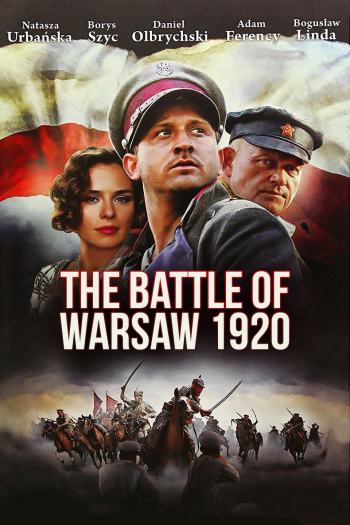
Screening of the historical drama THE BATTLE OF WARSAW 1920 recounting Poland's decisive victory over the Soviet invaders in one of the most critical battles in the world's history. The resounding defeat of Soviet army derailed the Soviet plan to spread communism all over Europe and preserved the sovereignty of the newly reborn Polish state (1918). The cruelty of invaders is expressively depicted on the backdrop of trials and tribulations faced by a newly married couple separated by the war. Historical figures appearing in the movie include Józef Piłsudski leading Poles to victory achieved against all odds..... check here for location and more information
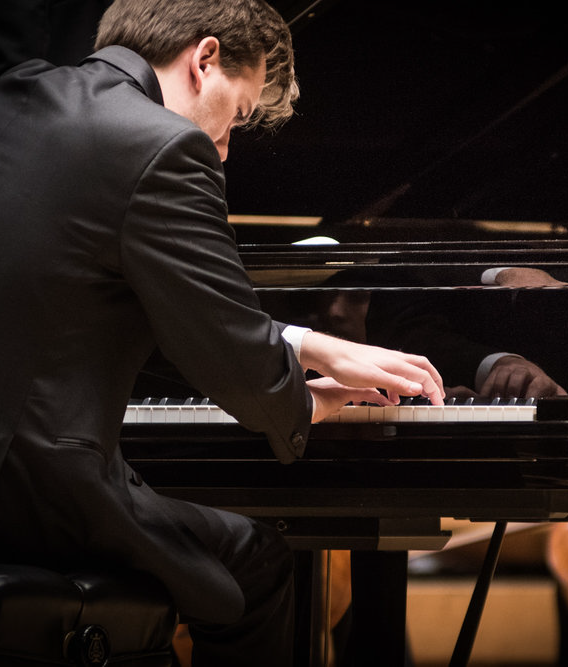
In this rare opportunity to experience
Poland's musical heritage and diversity, Igor Lipinski performs music by some of the greatest Polish composers of the 19th - 21th century: Fryderyk (Frédéric) Chopin, Ignacy Jan Paderewski, Karol Szymanowski, Grażyna Bacewicz, and Paweł Mykietyn..... Polish-born Igor Lipinski is a seasoned concert pianist, university professor and occasionally, a magician (see videos to the right). Check here for location and more information.
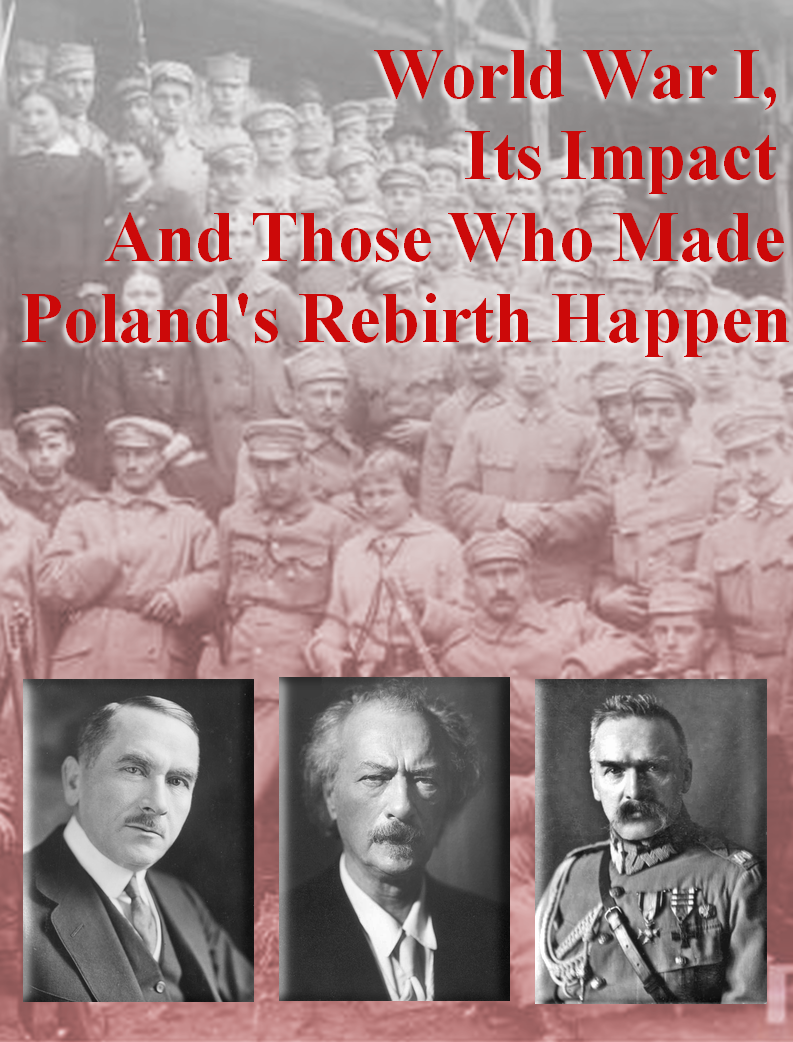
Dr Donald Pienkos, professor emeritus of political science from UW -Milwaukee comes again to Madison to talk about events leading to Poland regaining independence in 1918. Among the main people who made Poland's rebirth happen were a soldier, a politician, a famous musician, and one of American presidents. Join us to learn more about those charismatic characters and historical events that brought Poland back on the map of Europe after 123 years of partitions... check here for location and more information
POLISH-RELATED EVENTS IN MADISON
OCTOBER 2018
October 5: Monthly PHC-Madison Breakfast
October 20: PHC sponsored screening of the historical epic "THE BATTLE OF WARSAW 1920"
Click on each line above to see details
See our calendar for more events
PHOTOS from the 2018 WILLY ST. FAIR & PARADE
FOURTH MEETING: 7pm on November 13, 2018
Topic: JAN SOBIESKI AND THE BATTLE OF VIENNA
click here for location and contact information
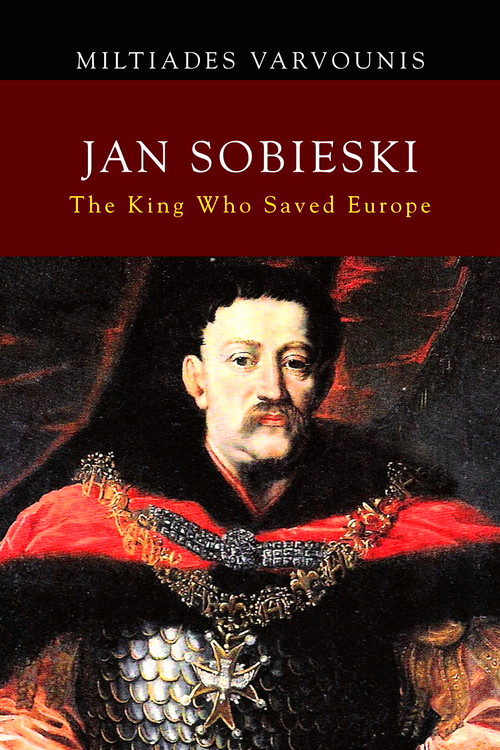
JAN SOBIESKI:
The King who Saved Europe
by Miltiades Varvounis
From the review by Robert Strybel: "Jan Sobieski was one of the most extraordinary and visionary monarchs of the Polish-Lithuanian Commonwealth from 1674 until his death. He was a man of letters, an artistic person, a dedicated ruler but above all the greatest soldier of his time. Popular among his subjects, he won considerable fame for his decisive victory over the Ottomans at the walls of Vienna (1683). .... Known to the Turks as the Lion of Lechistan, his greatest triumph was of course the victory of the some 80,000 Polish, Austrian and German troops under his command over a numerically superior 130,000-strong Turkish force in the September 1683 Battle of Vienna. The turning point of the battle, which had been mainly an infantry clash, came when the Polish monarch had his legendary Hussar heavy infantry charge down a hillside into the fray, striking terror in the hearts of his Turkish foes. Within hours it was all over. Ever the pious Catholic, in a letter to Pope Innocent XI Sobieski modified Julius Caesar’s well-known quote (“We came, we saw, we conquered”) into a more devout and modest: “We came, we saw, God conquered!” The pope called him “the savior of Christendom,” knowing that the victory had prevented Europe from falling under Muslim domination"
From the author's website: "... Miltiades Varvounis was born in Athens, Greece in 1980. Of Polish descent, he considers himself Graecorum et Polonorum filius (a son of Greeks and Poles). His areas of research include, among other things, "Sarmatian" civilization of the Polish-Lithuanian Commonwealth, Polish, Lithuanian, and Turkish histories. Alongside his professional activities, Miltiades Varvounis has always considered it his national duty to study Polish civilization and to promote the achievements of the Polish people to the whole world. Miltiades Varvounis lives in Athens. He also spends some time in the Polish towns of Łask and Chojnice, and in Kaunas, Lithuania. ..."
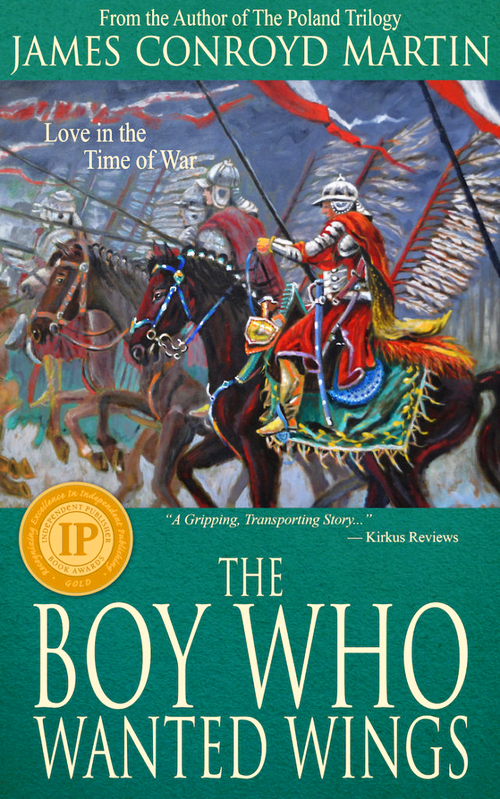
The Boy Who Wanted Wings:
Love In The Time Of War
by James Conroyd Martin
From the customer review on the Amazon website: "An absorbing historical novel throughout, this is the tale of a fascinating time, place and subject that have been given little attention. For those of us who love stories of knights, courageous underdogs, adventure and romance -- and love to learn about little known slices of history -- James Martin's novel offers a window into the rich culture of 17th century Poland and the world of the Polish Winged Hussars. The Hussars were an elite, knight class of formidable cavalrymen who took on and defeated forces much larger than theirs over the span of centuries. The story culminates in the Battle of Vienna, a real conflict in which Christendom stood on the brink of destruction. James Martin does a lovely job weaving in his characters and bringing the reader along for the ride."
ADDITIONAL BOOKS ON THE TOPIC:
The Siege of Vienna: The Last Great Trial Between Cross & Crescent by John Stoye. "...In his splendid study The Siege of Vienna, the Oxford historian John Stoye provides a detailed account of the intricate machinations between the Habsburgs and the Ottomans. Mr. Stoye's description of the siege itself is masterly. He seems to know every inch of ground, every earthwork and fortification around the Imperial City, and he follows the action meticulously..." /Eric Ormsby in The Wall Street Journal/
The Enemy at the Gate: Habsburgs, Ottomans, and the Battle for Europe by John Stoye. "...In 1683, an Ottoman army that stretched from horizon to horizon set out to seize the “Golden Apple,” as Turks referred to Vienna. The ensuing siege pitted battle-hardened Janissaries wielding seventeenth-century grenades against Habsburg armies, widely feared for their savagery... Each side was sustained by the hatred of its age-old enemy, certain that victory would be won by the grace of God.....A gripping work by a master historian, The Enemy at the Gate offers a timely examination of an epic clash of civilizations" /The GallenWilley review on the LibraryThing website/
Polish Winged Hussar 1576–1775 (Warrior) by John Stoye. This book examines the origins and development of the Polish 'Winged' Hussars. Using many years' painstaking research drawn from unpublished Polish sources, the author provides a rounded view of the training, tactics, appearance and experiences of these legendary and fascinating warriors. Most dramatic of all Hussar characteristics were the 'wings' worn on the back or on the saddle, although not all Hussars wore them, and their purpose has been fiercely debated. The Hussars terrified the Turks, Tatars, Muscovite boyars, Ukrainian Cossacks and Swedes, who did everything to avoid facing them directly in battle..." /Amazon website/
The Siege of Vienna: The Last Great Trial Between Cross & Crescent by John Stoye. "...In his splendid study The Siege of Vienna, the Oxford historian John Stoye provides a detailed account of the intricate machinations between the Habsburgs and the Ottomans. Mr. Stoye's description of the siege itself is masterly. He seems to know every inch of ground, every earthwork and fortification around the Imperial City, and he follows the action meticulously..." /Eric Ormsby in The Wall Street Journal/
.....
.....
POLISH FILM FESTIVAL
The Polish Heritage Club is one of the sponsors of the annual
Polish Film Festival at UW-Madison. The festival became an
established tradition of celebrating and promoting the most
recent and accomplished Polish movies.
Shows are free to the public.
Seating is limited and provided on a "first come, first served" basis.
Films are screened in the original language with English subtitles.
The annual festival is organized by the UW-Madison Polish Student Association
in collaboration with the Department of Slavic Languages and Literature and
the Wisconsin Union Directorate (WUD Film Comittee.
Movies screened in 2015 at the 25th
Annual Polish Film Festival
http://madfilm.org/attend-polish-film-festival-at-mrqe-sun-nov-22-sun-dec-6/
Sunday, November 15, 8pm
Call me Marianna (2015, dir. Karolina Bielawska, documentary)
As Marianna transitions from male to female, she is alone in a world unwilling to accept her true self. This multi-award-winning documentary is an intensely sympathetic and powerful account of one individual’s struggle to gain acceptance—even in the midst of profound physical hardship. https://www.youtube.com/watch?
The director of the movie was present at the screening and Q&A session.
Sunday, November 22, 1pm
Theses Daughters of Mine (2015, dir. Kinga Debska, 2015)
A touching story about the strength of family ties in a situation of imminent danger. Two sisters and their domineering father, who gradually loses control over his family due to his wife's sudden illness and his own health troubles; these are the three individuals at the heart of movie. http://en.pisf.pl/films/
Sunday, November 22, 3pm
The Photographer (2014, dir. Wlademar Krzystek)
The Photographer is an elusive serial killer operating in modern-day Moscow. Natasza, the sole witness who has survived an encounter with the Photographer, is to act as bait. The investigation points to the old Re d Army barracks in Legnica, Poland and to events dating back to the 1970s. https://vimeo.com/96888754
Sunday, December 6, 1pm
Gods (2014, dir. Lukasz Palkowski)
Far from any embellishment, a story based on facts about the life of a Polish cardiologist, who performed the first successful heart transplant in the communist Poland in the ‘80s. A portrait of an extraordinary human being who dared to challenge the existing rules under extremely adverse and difficult circumstances. https://www.youtube.com/watch?
Sunday, December 6, 3pm
Warsaw 44 (2014, dir. Jan Komasa)
A story of love, friendship and the pursuit of adventure during the bloody and brutal reality of the 1944 Warsaw Uprising. https://www.youtube.com/watch?
Movies screened in 2015 at the 25th
Annual Polish Film Festival
http://madfilm.org/attend-polish-film-festival-at-mrqe-sun-nov-22-sun-dec-6/
Sunday, November 15, 8pm
Call me Marianna (2015, dir. Karolina Bielawska, documentary)
As Marianna transitions from male to female, she is alone in a world unwilling to accept her true self. This multi-award-winning documentary is an intensely sympathetic and powerful account of one individual’s struggle to gain acceptance—even in the midst of profound physical hardship. https://www.youtube.com/watch?
The director of the movie was present at the screening and Q&A session.
Sunday, November 22, 1pm
Theses Daughters of Mine (2015, dir. Kinga Debska, 2015)
A touching story about the strength of family ties in a situation of imminent danger. Two sisters and their domineering father, who gradually loses control over his family due to his wife's sudden illness and his own health troubles; these are the three individuals at the heart of movie. http://en.pisf.pl/films/
Sunday, November 22, 3pm
The Photographer (2014, dir. Wlademar Krzystek)
The Photographer is an elusive serial killer operating in modern-day Moscow. Natasza, the sole witness who has survived an encounter with the Photographer, is to act as bait. The investigation points to the old Re d Army barracks in Legnica, Poland and to events dating back to the 1970s. https://vimeo.com/96888754
Sunday, December 6, 1pm
Gods (2014, dir. Lukasz Palkowski)
Far from any embellishment, a story based on facts about the life of a Polish cardiologist, who performed the first successful heart transplant in the communist Poland in the ‘80s. A portrait of an extraordinary human being who dared to challenge the existing rules under extremely adverse and difficult circumstances. https://www.youtube.com/watch?
Sunday, December 6, 3pm
Warsaw 44 (2014, dir. Jan Komasa)
A story of love, friendship and the pursuit of adventure during the bloody and brutal reality of the 1944 Warsaw Uprising. https://www.youtube.com/watch?
POLISH FILM FESTIVAL
This annual event is organized by the UW-Madison Polish Student Association in collaboration with the Department of German, Nordic, and Slavic Languages, CREECA, Wisconsin Union Directorate (WUD) Film Comittee, and the Polish Heritage Club of Madison WI.
This year’s edition of the Madison Polish Film Festival will be an online-only event held on December 5th and 6th, 2020.
All the films will be subtitled and available for screening at any time during the festival weekend.
Registration is free and open to Wisconsin residents!
► REGISTRATION LINK WILL OPEN SOON ◄
Movies screened in 2020 at the 30th
Annual Polish Film Festival
author: IRENA FRACZEK
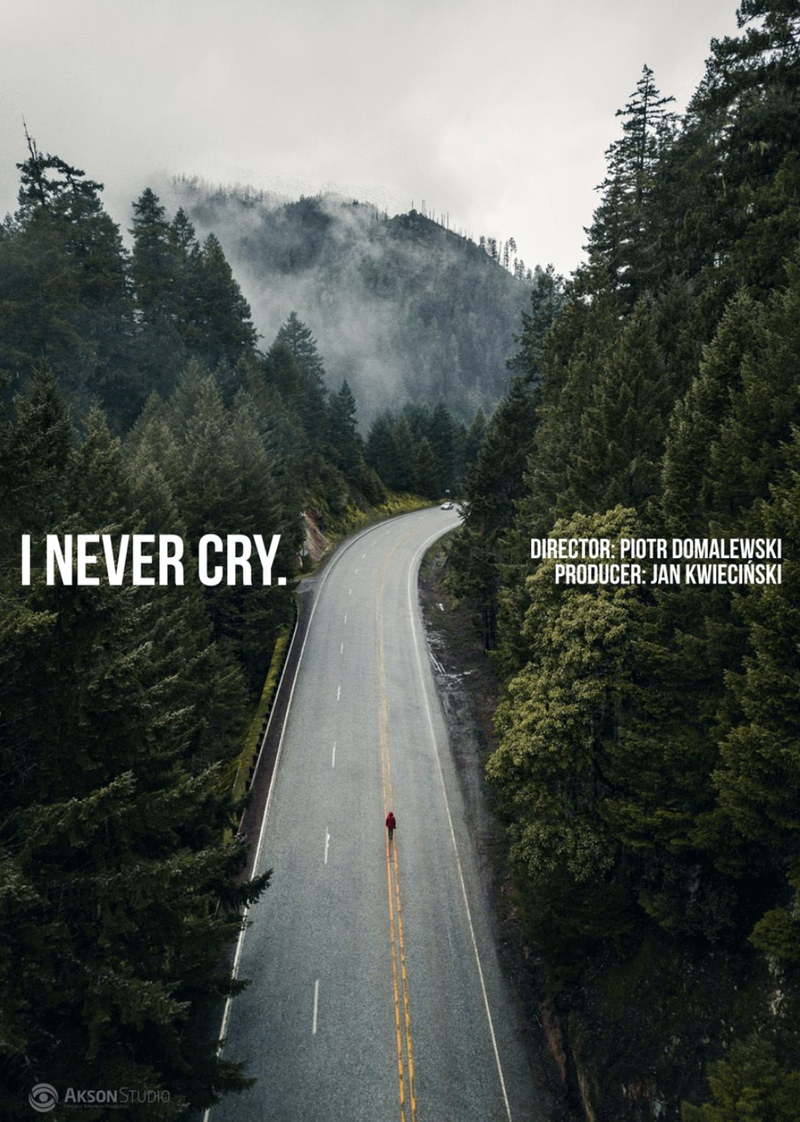
December 5 and 6, 2020
I Never Cry
(original title: Jak najdalej stąd )
(2020, dir. Piotr Domalewski, 103 minutes)
►TRAILER◄
Seventeen-year-old Ola sets off to Ireland to bring her father’s body back to Poland after he dies in a building site accident. But never mind her dad, Ola wants to know if he saved the money for a car he had promised her. Dealing with a foreign bureaucracy in her own streetwise way, Ola finally gets to know the father who had been largely absent in her life.
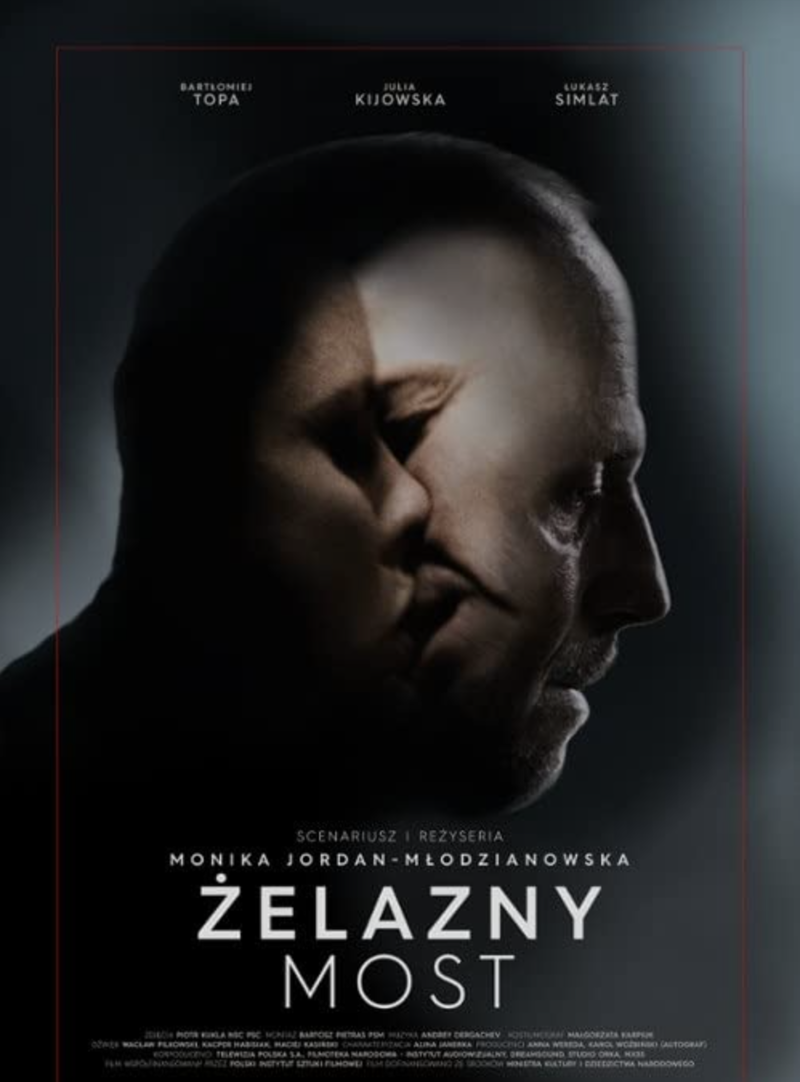
December 5 and 6, 2020
The Iron Bridge
(original title: Żelazny most)
(2019, dir. Monika Jordan-Młodzianowska, 103 minutes)
►TRAILER◄
The dramatic story about a love triangle. Coalmine Foreman Kacper begins an affair with the wife of his friend, Oskar, also a miner. He sends Oskar off to work in the most distant and dangerous parts of the pit so that he can meet his lover. During one such tryst there’s a collapse at the mine, and Oskar is trapped. The lovers throw themselves into the rescue operation. They deal with feelings of guilt and with the realization that they were the indirect cause of the trapped man’s drama. Their strong feelings for each other further complicate their predicament.
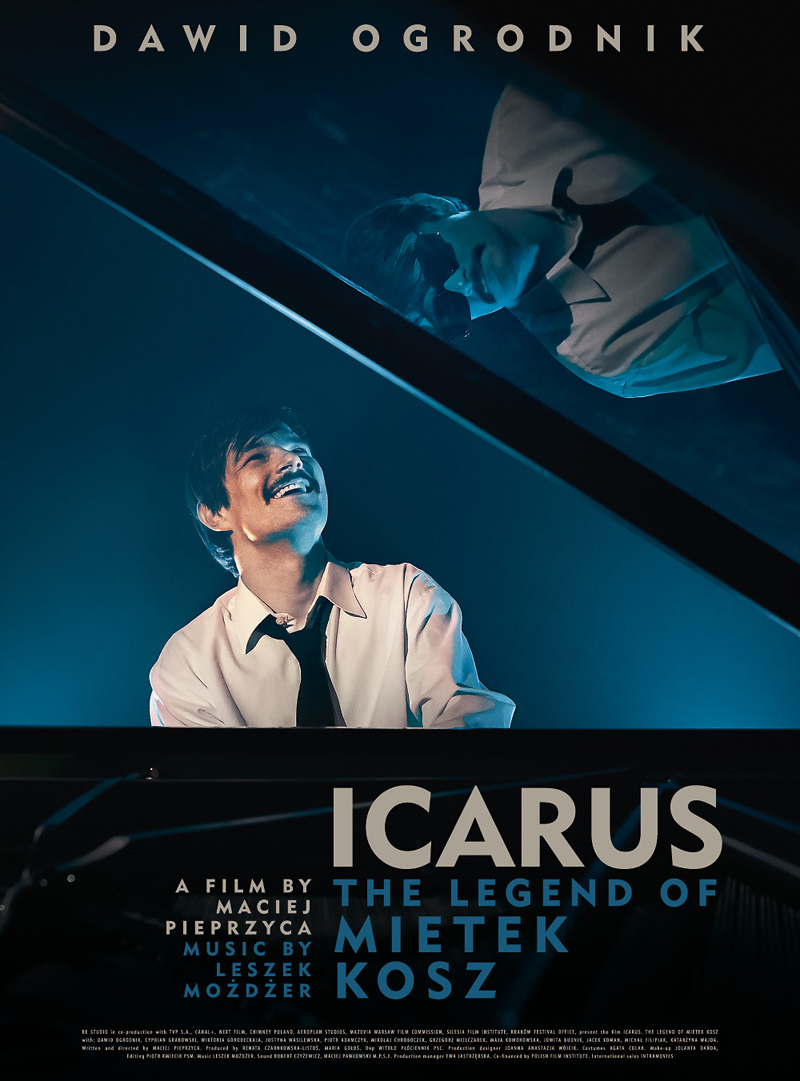
December 5 and 6, 2020
Ikar. Legenda Mietka Kosza
(original title: Icarus. The Legend of Mietek Kosz)
(2019, dir. Maciej Pieprzyca, 103 minutes)
►TRAILER◄
Inspired by the true story of the blind piano genius, Mieczylaw Kosz. As a child, Mietek (Mieczyslaw) loses his eyesight, and his mother places him in The Educational Center in Laski outside of Warsaw, a one-hundred-year-old school for the visually impaired. There he discovers music and finds that it is his way coping with the world. Mietek develops into an excellent classical pianist, but when he discovers jazz, he has only one goal: to become the best jazz pianist in Poland. He becomes more and more successful, not only in Poland, but around the world. He wins the prestigious Montreux Jazz Festival. Unexpectedly, a charismatic vocalist, Zuza, walks into his life, a meeting that will change his life forever.
.......................
.......................
POLISH FILM FESTIVAL
This annual event is organized by the UW-Madison Polish Student Association in collaboration with the Department of German, Nordic, and Slavic Languages, CREECA, Wisconsin Union Directorate (WUD) Film Comittee, and the Polish Heritage Club of Madison WI.
Movies screened in 2022 at the 32nd
Annual Polish Film Festival
author: IRENA FRACZEK
The PHC Book Club
The Book Club members read and discuss a variety of books
about Polish heritage and/or written by Polish authors.
Here is the list of books we have explored over the years.
FIRST MEETING: 2pm on February 11, 2025
click here for location and contact information

The Torpedo Season:
Growing Up During World War II
From the Amazon review by Catherine A. Hamilton, author of Victoria's War: "This upbeat WWII memoir has a message for all of us! This enchanting collection of short stories by Dr. Richard Lukas — a renown Polish historian and author of countless nonfiction books about WWII Poland — is the most delightful of memoirs...Set in the Polish immigrant neighborhoods of New England at the onset of WWII, Lukas brings to life the heartwarming tales of a boy who grew up immersed in Polish-American culture...From the bombing of Pearl Harbor to visits from Polish RAF pilots on leave from fighting the Germans from England; from a beach combing trip that unearths an undetonated Torpedo washed up on America’s Eastern shores, to quintessential Polish Christmas Eve celebrations, to parochial school capers, all through the eyes of a child whose curiosity, wonder, and humor resound on every page."
From the Review by Dr John M. Grondelski in The Polish Weekly: "The value of Torpedo Season is seeing World War II through the eyes of a Polish-American boy in a Polish-American family, an experience profoundly different both from a peer in Poland as well as from an “average” American child growing up during the Second World War....Even though even Americans living on the coast might have a notional awareness of German submarines off American shores, it was often more theoretical than practical....For Polish-American families, the War was much more existential. Most of them, not long removed from the experience of immigration, still had family in “the old country.... Apart from the war effort, Lukas also gives us insight into the challenges of growing up a Polish-American boy in the United States. Prejudice was one challenge. Lynn was a manufacturing town with plenty of immigrants, but also an older, nativist Protestant stratum. Lukas recalls being called a “papist” by Protestant boys who admitted they didn’t know what that meant. Later, when the family moved to neighboring Swampscott, a much more white Anglo-Saxon Protestant enclave, Lukas remembers various neighbors ignoring his family because of their Slavic roots."
FOURTH MEETING: 2pm on September 24, 2024
click here for location and contact information
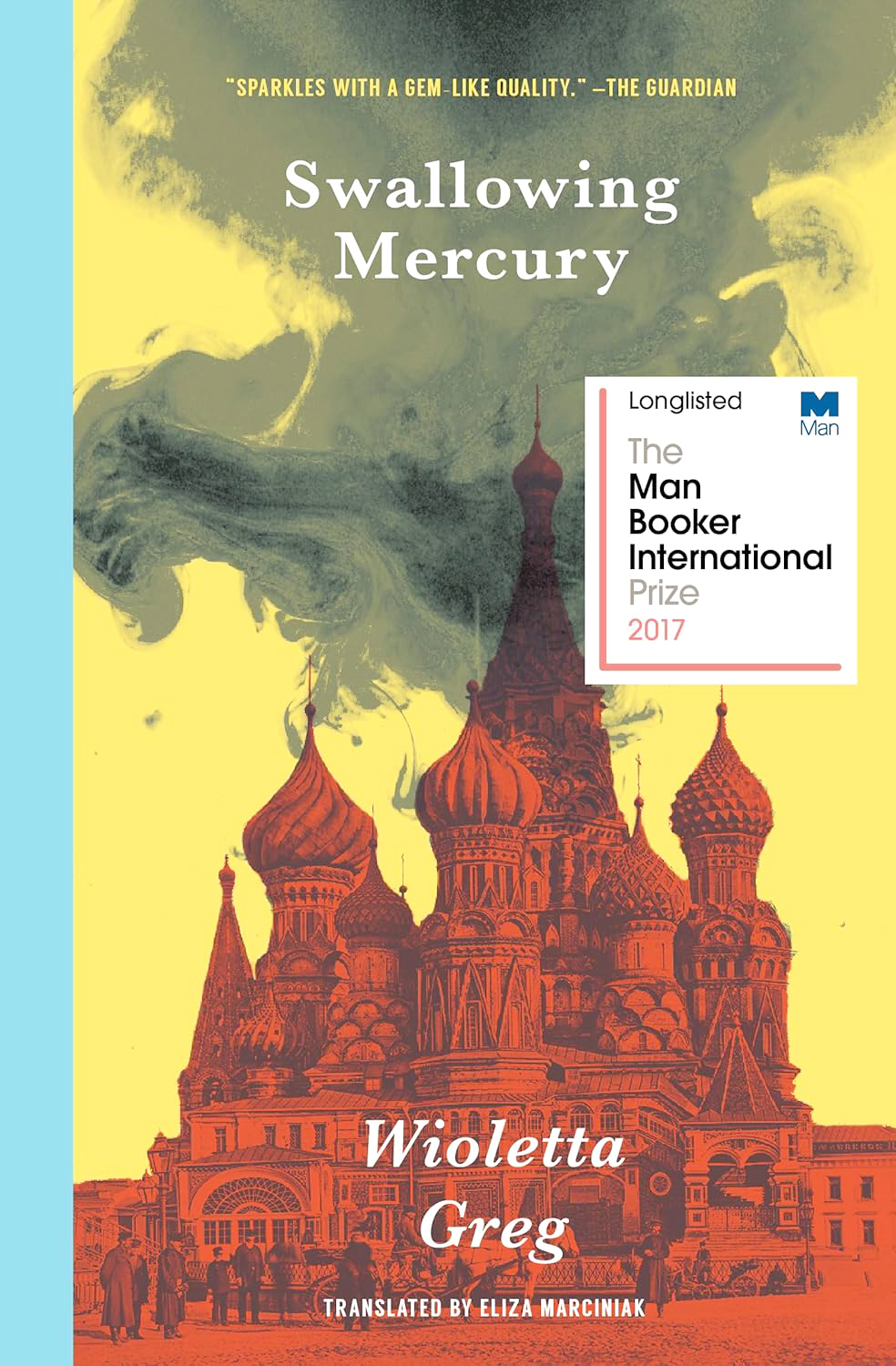
Translation by Eliza Marciniak
From the NYT review by Inara Verzemnieks: "In her entrancing fiction debut, “Swallowing Mercury,” the poet Wioletta Greg achieves a form of literary alchemy that mesmerizes for its ability to situate us inside a personal landscape where both the eternal past and the unfolding present feel as if they can exist simultaneously."
From the goodreads review by Antonamasia: "I've rarely encountered a book which contains so much loveliness whilst also not shying away from very unpleasant aspects of life, and I am very impressed by this combination of romanticising-and-not. I was always going to have something of a soft spot for it - if it had been from almost anywhere else I might never have read it due to the English title - but my expectations were surpassed, and I'm glad to see that the sequel, the better-named Accommodations is out in English next year, even if, so far, only a US publication is evident."
From the Guardian review by Kapka Kassabova: "This enchantingly elliptical fiction debut by British-domiciled Polish poet Wioletta Greg (right) sparkles with a gem-like quality. Thanks to Eliza Marciniak’s crisp translation, it brings freshness even to the crowded genre of the novella-sized bildungsroman, and can be devoured alongside the best coming-of-age translations of recent years, such as Down the Rabbit Hole by Juan Pablo Villalobos, Signs Preceding the End of the World by Yuri Herrera and The Dead Lake by Hamid Ismailov."
From the bookblast.com review by Gloria de Chamberet: "The peasant life we learn about in the book, rooted in the land and ancient traditions, is eroded by Communism and killed off by Capitalism.... Irony of ironies! Now you are likely to find Wiolka’s granny’s buckwheat blood pudding, and her mother’srestorative carrot juice, being sold for exorbitant prices in chic health food shops like Planet Organic andWhole Foods Market catering to London’s nouveaux riches..... Invasion, occupation, partition: Poland’s strategic location between Germany and Russia has made it atarget throughout history. In 1990, after the fall of Communism, Lech Walesa became Poland’s firstpopularly-elected president. In 2004, Poland was one of ten new states to join the EU. Britain’snationalist-minded tabloids make Poles the enemy, taking away jobs and homes. Post-truth politicsthrive on ignorance, breeding fear and hate. We have much to thank Poland for – not least Chopin,Copernicus, Marie Curie, Joseph Conrad, Helena Rubinstein … and Häagen-Dazs ice cream."
SECOND MEETING: 2pm on April 23, 2024
click here for location and contact information
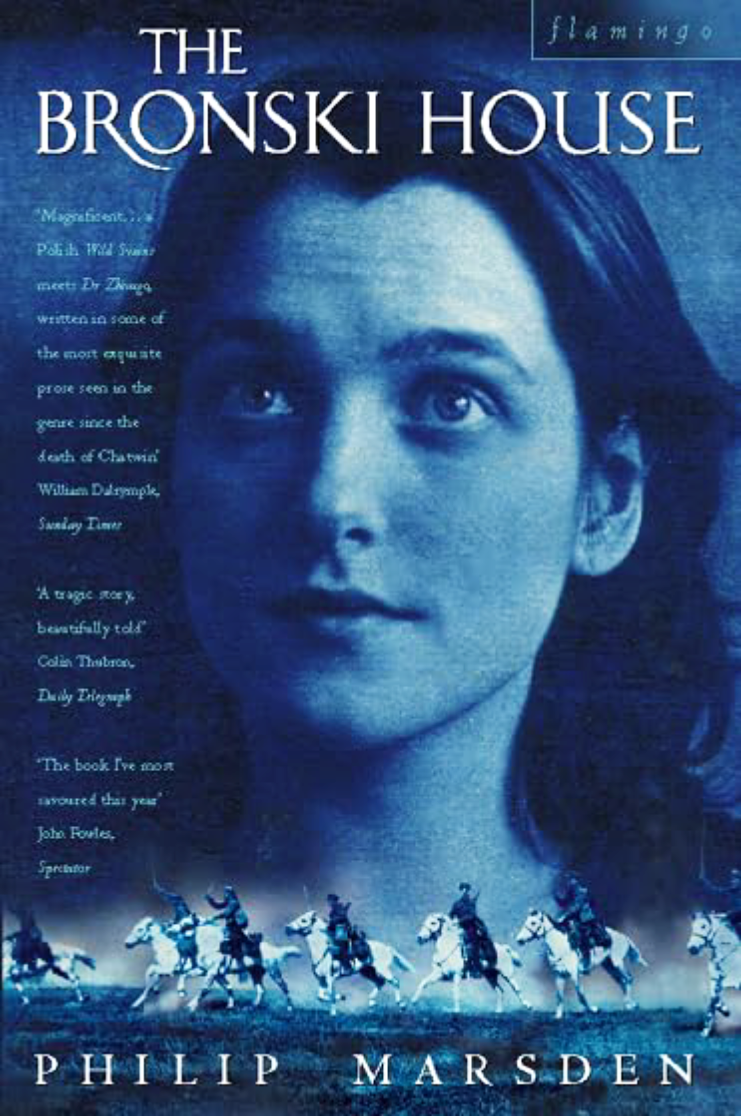
The Bronski House:
A Return to the Borderlands
From the BAM! website: "A remarkable, multifaceted story made up of journal accounts, memories, conversations and personal experience, The Bronski House is a paean to Poland, a landmark in travel writing, and a family history - tied together by the unique experience of returning from exile. In the summer of 1992, accompanied by Philip Marsden, the exiled poet Zofia Ilinska stepped into the Belorussian village where she had spent her childhood. The Bronski House is in part the remarkable story of what she found. "
From the Kirkus Review: "That poet Zofia Ilinska had a colorful and mysterious past was apparent early on to Marsden, who as a boy summered in the Cornish village where Ilinska lived. Yet nothing quite prepared him for the drama, pain, and courage that were revealed to him when he accompanied his old friend on a journey to her ancestral homes in and around the city of Vilnius, in Poland's former eastern borderlands."
From the ecampus website: "Marsden narrates the story of Zofia's return movingly but without sentimentality. And when she gives him her mother's diary, and letters, he begins to peel away the layers of Bronski history. From Zofia's journey we move back in time to the beautiful, courageous Helena, Zofia's mother, whose own family had had to uproot itself during the catastrophic events of 1914. From this chronicle of lost times and displaced souls emerges a passionate, magnificent epic of mother and daughter, a stirring elegy for the worlds that our century has left behind, and an unforgettable testament to love's power to reconstruct and forgive."
From the Amazon's customer review: "Marsden's writing is poetry, so light and inviting you are engrossed in the tale he reconstructs in an instant. The people in his story are real and so are the places, they just happen to have been the cauldron that was Eastern Europe during the years of two World Wars, revolution and collapse of empires. The social turmoil this gave rise to provides the dramatic backdrop to a book which is a tapestry of life, filled with hope, sorrow, striving, laughter and above all, love. In a short read, you will be transported beyond all the boundaries that seem to constrain our being - time, death and war - to share something magical from a forgotten corner of Europe's badlands"
FIRST MEETING: 7pm on February 14, 2023
click here for location and contact information
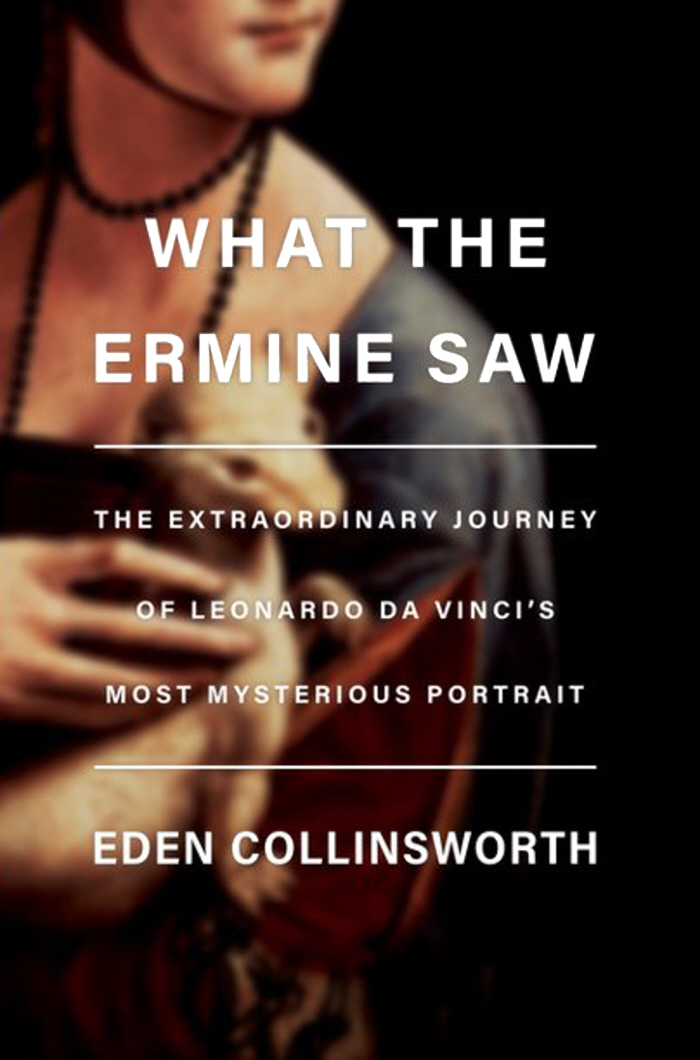
What the Ermine Saw:
The Extraordinary Journey of Leonardo da Vinci's Most Mysterious Portrait
From the NYT review: "Eden Collinsworth’s fourth book ... traces the tumultuous history of Leonardo’s painting, from Sforza’s Renaissance court to Enlightenment-era Poland to the portrait’s theft by Nazi looters during the Second World War."
From the Publishers Weekly: "Tracking the painting across five centuries, Collinsworth reveals that the portrait’s subject was most likely Cecelia Gallerani, the mistress of Ludovico Sforza, the Duke of Milan."
From the NYT review: "Gallerani was not only a beauty but also a talented poet, scholar and composer, a true Renaissance woman who beguiled the fierce Ludovico Sforza, Duke of Milan. The ermine — added by Leonardo in the second of three stages of this painting — is an allusion to Sforza, who was nicknamed “White Ermine”; it rests tame but potent in Gallerani’s hands, strangely erotic for a weasel" .... “Lady With an Ermine” disappeared for more than two centuries after Gallerani’s death, only to re-emerge around 1800, when the Polish Prince Adam Jerzy Czartoryski purchased it on a tour of Napoleonic Italy; he gave the portrait to his mother, Princess Izabela Dorota Czartoryska."
From the Kirkus Review: "Collinsworth meticulously charts the painting’s circuitous path throughout Europe during political unrest and two world wars to a German governor-general who was busy creating “a systematic campaign to eradicate Polish culture.” Finally transferred to the National Museum in Kraków, the painting has since been exhibited around the world."
FOURTH MEETING: 7pm on November 22, 2022
click here for location and contact information
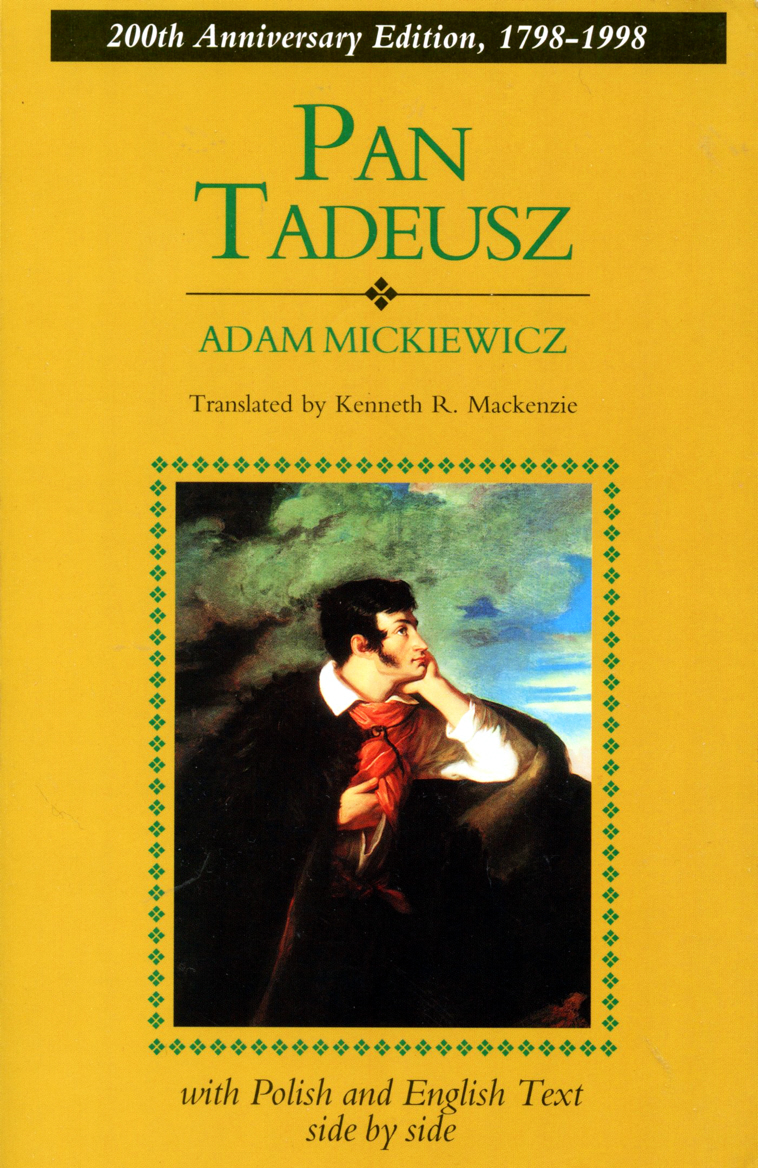
PAN TADEUSZ
The Last Foray in Lithuania
by Adam Mickiewicz
Roman Koropeckyj (University of California, Los Angeles): "Published in Paris four years after a failed uprising against Russia forced much of Poland’s cultural and political elite into exile, Adam Mickiewicz’s 1834 poem Pan Tadeusz [Master Thaddeus] is considered by Poles to be their national epic—and, arguably, “the only successful epic [the nineteenth century] produced” (Brandes, 284)....Pan Tadeusz is a foundational narrative about change and continuity, in which, as one of its early readers put it, “one can not only read [a nation’s] entire soul, but even recognize those everyday features […] that constitute passage from the generation of the dead to the generation of the living, bond it with the future, and bring forth from the grave the nucleus of a future life” (Stanisław Worcell to Mickiewicz, 7 November 1838, Listy, 392–93). And it is precisely Mickiewicz’s capacity to materialize those everyday features, to evoke in a poetic language of remarkable concreteness the colors, smells, and sounds of a provincial, backward world on the verge of extinction, with its bear hunts and tribunals, repasts and vegetable patches, gentry estates and Jewish taverns, petty quarrels and forays, that renders a seamless, “noumenal” tapestry, wherein nature constitutes the woof to society’s warp and where amid humor and pathos there is no room for winter. As yet another early reader of the poem proclaimed, in Pan Tadeusz “the Polish nation will never die” (Julian Ursyn Niemcewicz to Stefan Witwicki, 15 July 1837, Korespondencja, 70)."
A compulsory reading in Polish schools, the poem was added to Poland's list in the UNESCO Memory of the World Programme in 2014. It has been translated into 33 languages, with eight English translations done up to date:
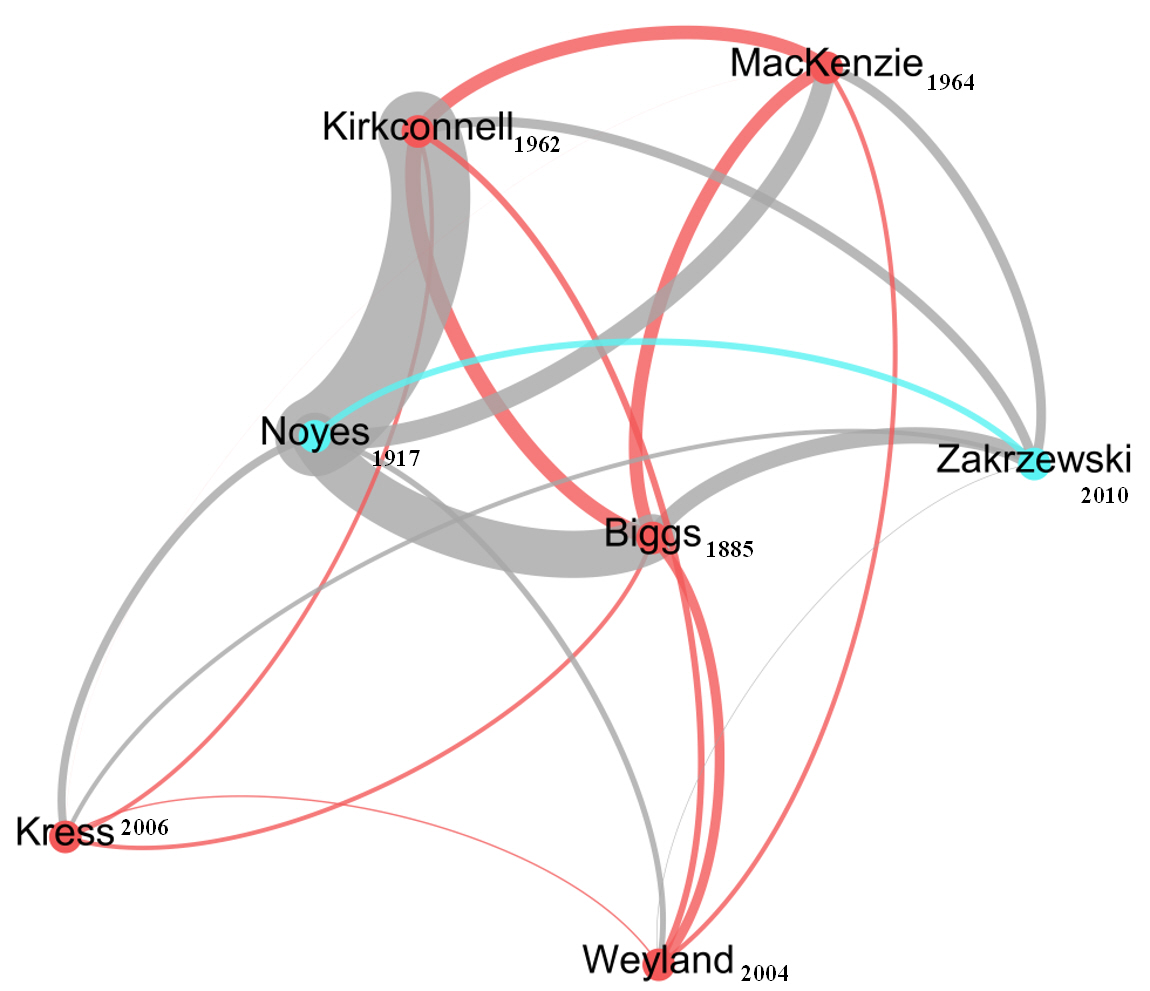
- Biggs, Maude Ashurst, London 1885 (in Miltonian blank verse);
- Noyes, George Rapall, London & Toronto, New York 1917 (prose);
- Kirkconnell, Watson, 1962 (verse, based on Noyes);
- Mackenzie, Kenneth R., London 1964 (iambic pentameter);
- Weyland, Marcel, Blackheath, NSW 2004 (verse);
- Kress, Leonard, Philadelphia 2006 (10 syllables with 5 stresses, with alternating rhymes);
- Zakrzewski, Christopher Adam, New York 2010 (prose);
- Johnston, Bill, 2018 (verse).
Two of them convert the original verse into prose (Noyes 1917 and Zakrzewski 2010), while the iambic pentameter used in the most popular translation (Mackenzie 1964) resembles well the Polish alexandrines of the original. The most recent translation (Johnston 2018) won the 2019 National Translation Award in Poetry.
THIRD MEETING: 7pm on September 6, 2022
click here for location and contact information
Karolina And The Torn Curtain:
A Zofia Turbotynska Mystery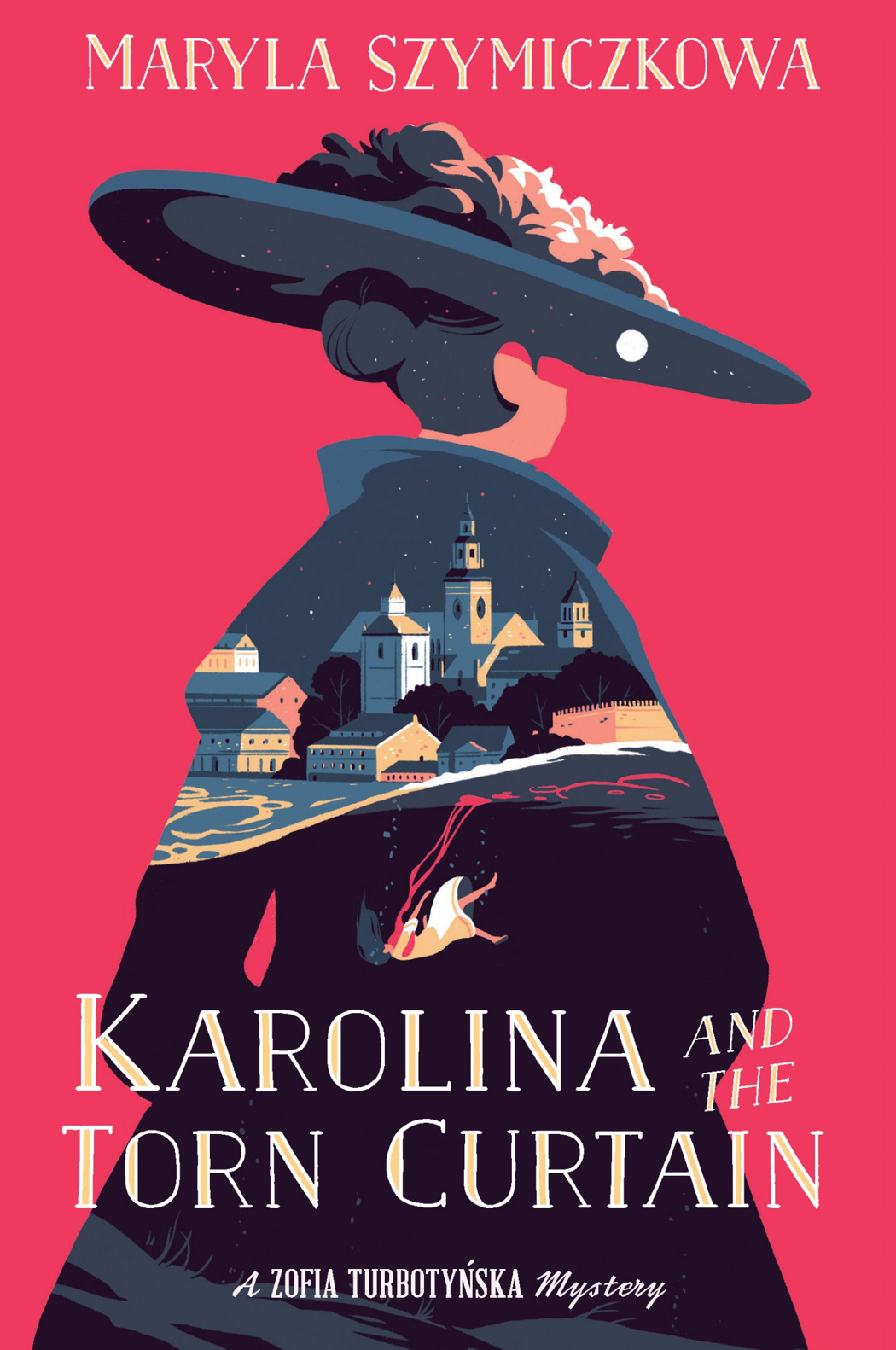
by Maryla Szymiczkowa
Polish title: Rozdarta zasłona.
Śledztwa profesorowej Szczupaczyńskiej
Translation by Antonia Lloyd-Jones
From the Amazon website: " “An ingenious marriage of comedy and crime” (Olga Tokarczuk, Nobel laureate): when amateur sleuth and cunning socialite Zofia Turbotyńska’s beloved maid goes missing, she dives deep into Cracow’s web of crime, with only her trusted cook for company."
From GoodReads: Set in Poland at about the time when some of my grandparents left and came to a Polish enclave in Wisconsin, the names and speech patterns are only too familiar. Many thanks to Antonia Lloyd-Jones for her translation of this fun mystery. I also thought it a marvelous thing to "see" Crakow as it once was instead of the disaster left by the last world war. Zofia is a rather snobbish wife of a professor who has a quick wit and an investigative bent. When one of her maids is found to have been murdered, her investigation (AKA snooping) brings her to the world of involuntary trafficking (which has yet to be eradicated in today's world)."
From the Kirkus Review: " Pseudonymous partners Jacek Dehnel and Piotr Tarczyński bring both the do-gooders and the criminals of fin-de-siècle Cracow to entertaining life, but their deepest interest is in the unlikely detective lurking beneath “the sedate Mrs. Jekyll”: “the hidden Mrs. Hyde, the fearless stalker of criminals.” .... A gravely decorous period piece that vividly evokes its moment while maintaining an archly amused distance from it."
From the Publisher's Weekly: "One night in 1895 Cracow, the body of 17-year-old housemaid Karolina Szulc is found on a river bank, in the pseudonymous Szymiczkowa’s entertaining sequel to 2020’s Mrs. Mohr Goes Missing. Karolina worked for Zofia Turbotynska, a respectable member of the bourgeoisie, who’s incensed by the police assuming the victim was a harlot, given the body’s location in a dubious district of the city. Keen to defend Karolina’s reputation, Zofia sets out to discover the truth. Her investigations put her in contact with every level of society, including prostitutes and socialists, and she even gets a glimpse of visiting Emperor Franz Joseph I of Austria."
From GoodReads: " Intriguing because of its sly take on the politics and society (high and low; the visible and the hidden aspects) just before the turn of the 20th century. Everything is slippery--values, mores, the justice system, and no character without some flaw (endearing or repellent)."
SECOND MEETING: 7pm on April 25, 2022
click here for location and contact information
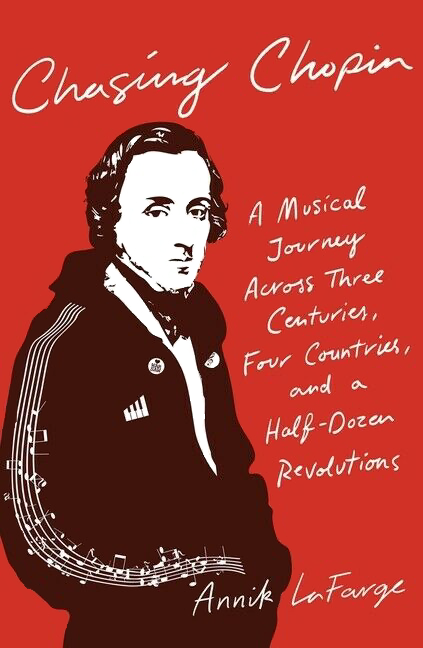
CHASING CHOPIN:
A Musical Journey Across Three Centuries,
Four Countries, and a Half-Dozen Revolutions
From the bookseller website: "The Frédéric Chopin Annik LaFarge presents here is not the melancholy, sickly, romantic figure so often portrayed. The artist she discovered is, instead, a purely independent spirit: an innovator who created a new musical language, an autodidact who became a spiritually generous, trailblazing teacher, a stalwart patriot during a time of revolution and exile.;
In Chasing Chopin she follows in his footsteps during the three years, 1837–1840, when he composed his iconic “Funeral March”—dum dum da dum—using its composition story to illuminate the key themes of his life: a deep attachment to his Polish homeland; his complex relationship with writer George Sand; their harrowing but consequential sojourn on Majorca; the rapidly developing technology of the piano, which enabled his unique tone and voice; social and political revolution in 1830s Paris; friendship with other artists, from the famous Eugène Delacroix to the lesser known, yet notorious in his time, Marquis de Custine. Each of these threads—musical, political, social, personal—is woven through the “Funeral March” in Chopin’s Opus 35 sonata, a melody so famous it’s known around the world even to people who know nothing about classical music. But it is not, as LaFarge discovered, the piece of music we think we know."
From the NYT review by Jeremy Denk (one of America's foremost pianists): "Looking back in time, LaFarge describes the composer’s loves and pianos (often the same); she explores his handwriting, his fingerings, his Polish identity. But she also turns to the present day, consulting aspiring pianists, authorities in historical performance and Zibi, the creator of the video game “Frederic: The Resurrection of Music.” For a book about death, it’s bursting with life and lively research. LaFarge writes passionately about Bach’s influence on Chopin, and the virtues of listening to period pianos to know what Chopin heard and imagined."
From the Kirkus Reviews: "A seamless blend of the musical and literary verve, with just enough research to ground and elucidate."
Chasing Chopin: A Music Site
Its content available for download in this pdf file
FIRST MEETING: 7pm on January 25, 2022
click here for location and contact information
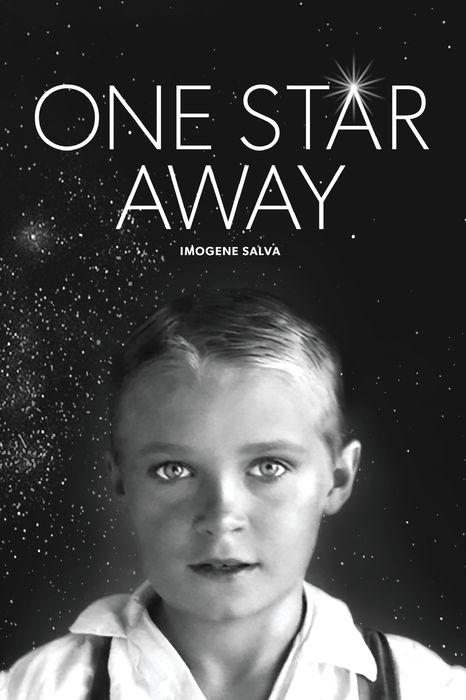
The author will attend the meeting
From the book's back cover: "In One Star Away, Imogene Salva re-constructs the emotional climate which surrounded the wartime ordeals of her mother, Józefa Nowicka, who was one of almost two million Polish citizens deported by Stalin's security police into the depths of Soviet Russia, Siberia and Central Asia. / by Norman Davies, author of "Europe: A History and Heart of Europe: The Past in Poland's Present"/
From the Amazon customer review: "World War II began with the German army invasion of Poland on 9/1/1939, followed by the Russian army invading eastern Poland on 9/17/1939. On February 10, 1940 at 3 a.m., Russian soldiers surrounded, entered and ransacked the home of a Polish family, forcibly removing Ziuta at age 8 along with her parents, her two brothers and three sisters, deporting them by train to a forced labor camp in northern Russia. The Soviets deported 1.7 million Poles to such labor camps in early 1940 and in June 1941. The family survives the 3-week journey in a crowded railcar intended for cattle (with a toilet that was just a hole in the floor). ...This true story continues in amazing accounts of struggle, survival and the aid of total strangers, including the Shah of Iran, an India Maharaja, a Polish Red Cross doctor, an actress/countess, an India truck driver and the Polish Government in Exile."
From the Amazon customer review: "This biography of a Polish child is an important and a true testimony to the history and fate of the entire generation of Poles in World War II. This novel is also a tribute to the memory of millions of people who experienced immeasurable suffering and degradation in Soviet Land, furthermore it is a warning against communism and its destructive power against the dignity of a human being. “Ziuta had been told by Mama that the Communists would try to make her think like them, and that they could be charming like the serpent in the Garden of Eden, but like venomous snakes they could kill both soul and body”(Salva 48). I would recommend this book for younger generations to create awareness and to note that one should not take one's freedom and peace for granted."
From the GoodReads reviews: " It is a story that inspires and frightens. It was frightening to see how inhumanity can stem from herd mentality which blinds human beings to cruelty and evil toward other humans. In contrast, it is hopeful and inspiring to see how this family survived and retained their humanity with their love and faith and the kindness and courage of people, who were willing to take risks out of the goodness of their souls. It is a story of resiliency and humanity winning out over unthinkable odds."
Discussion questions and other materials can be found in this pdf file




